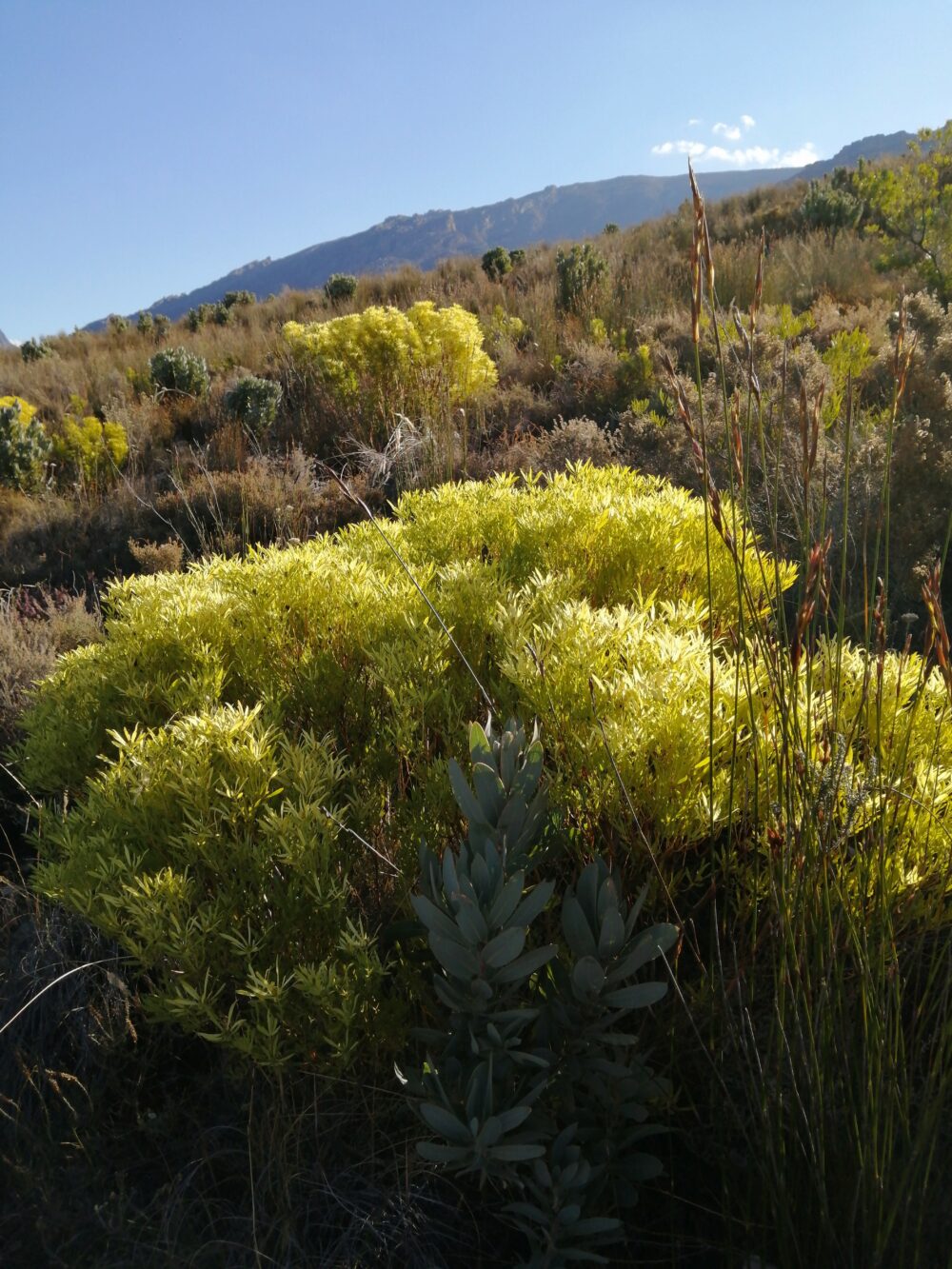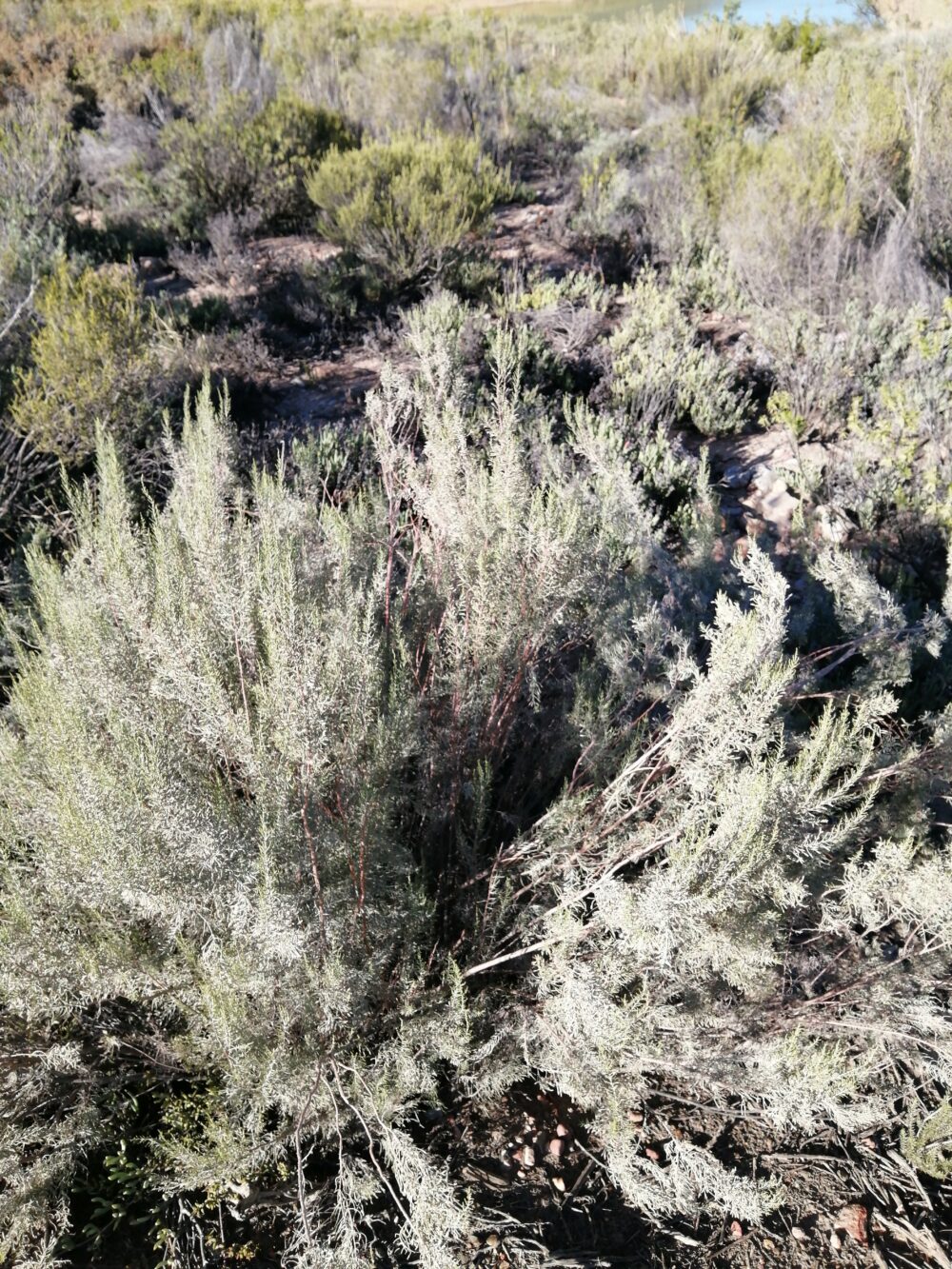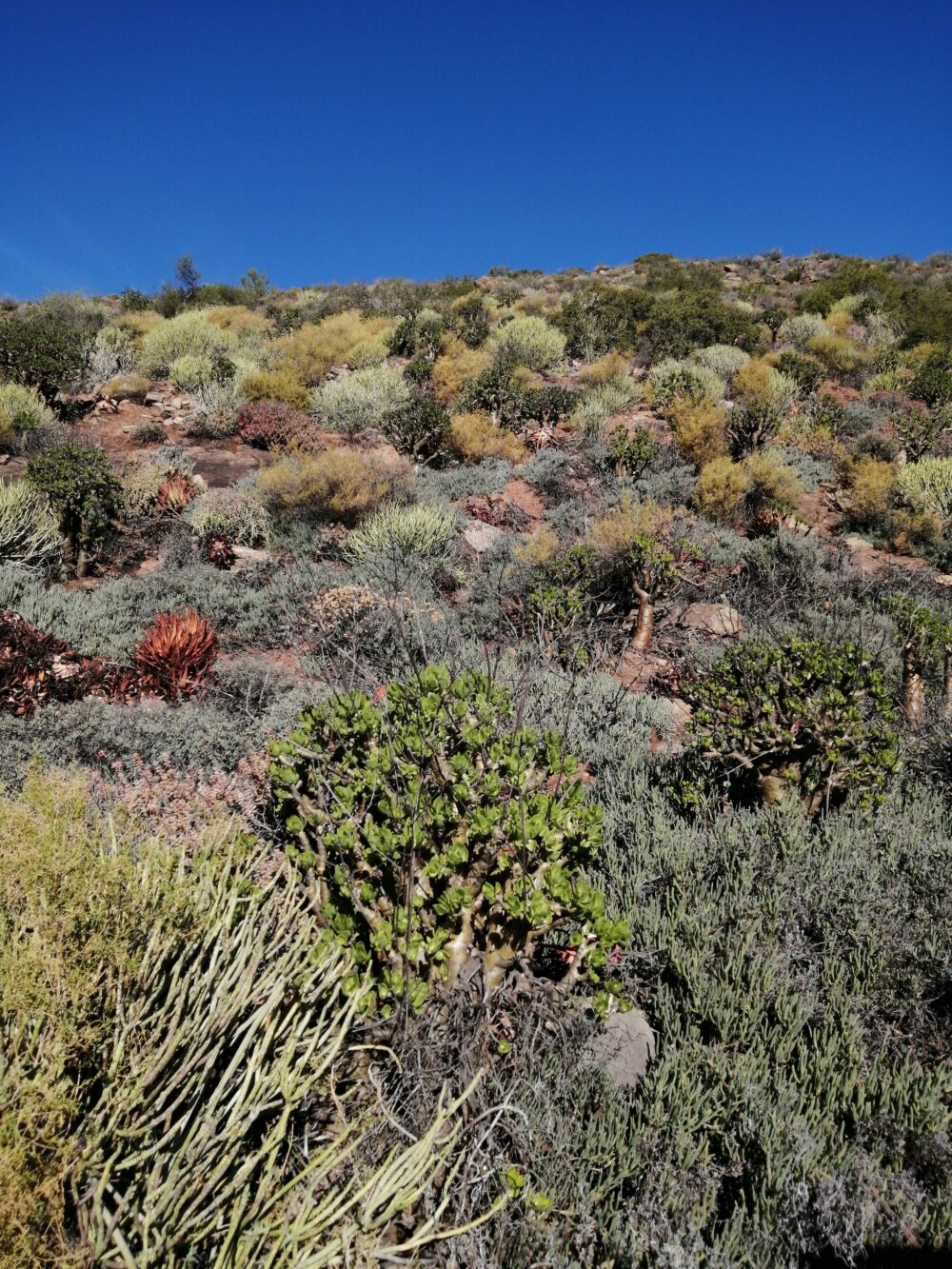Flora of the Hex
The Hex River Valley is a floral transition zone between Fynbos, Renosterveld and Robertson Karoo vegetation types. It is also a geological transition zone between the Cape Fold Mountains and the buttes (koppies) and mesas (table-like hills) of the Karoo.



Fynbos
Fynbos is a vegetation type that is endemic to the Cape region. The word literally translates to "fine bush", a name owed to the small leaves and small stature common to many Fynbos species. Fynbos is not a cladistic division, meaning that it is not a grouping of related plants. In fact, many Fynbos species are closely related to species that are not considered Fynbos.
Fynbos species tend to be highly specialized and adapted to their habitats. They thrive in sandy, nutrient-poor, acidic soils (hence the local name "Suurveld" or acidic field), and occur in winter rainfall areas. They are extremely well-adapted to the dry hot summer months. They often have small, hairy, reflective leaves so as to minimize water loss and to reflect the sun. Some species lose their leaves in summer completely or even lose all above ground parts.
Many Fynbos species rely on fire to stimulate germination, but too frequent burning is detrimental to their survival. It is thought that the supply of nutrient rich ash after a veld fire helps new seedlings to establish themselves. Ants also play an important role in depositing seeds underground. The seeds of many Fynbos species contain a tiny edible part that convinces ants to stash the entire seed.
In general, however, there is no single feature that definitively lets one classify a species as Fynbos. Many Fynbos species can be found in more arid regions that would otherwise be classified as Renosterveld or Karoo.
The following Fynbos vegetation types can be found in the Hex River Valley, mostly in the Hex River Mountains, but also in the valley floor:
- North Hex Sandstone Fynbos
- South Hex Sandstone Fynbos
- North Langeberg Sandstone Fynbos
- Western Altimontane Fynbos
- Breede Alluvium Fynbos
- Northern Inbound Shale Band
- Central Coastal Shale Band
Renosterveld
Renosterveld is a vegetation type that is strictly part of the Fynbos Biome, but prefers more nutrient rich soils and therefore lacks several characteristic Fynbos species such as proteas, heaths, restios, and hardleaves. Instead, Renosterveld is dominated by the Renosterbos, a hardy pale unpalatable shrub. Other notable species such as snowbushes, karees, sand olives, and tentfigs, some of which also occur in Fynbos, accompany the Renosterbos.
The specific type of Renosterveld that occurs in the northeastern parts of the Hex River Valley are known as Matjiesfontein Shale Renosterveld.
Robertson Karoo
The Robertson Karoo is a vegetation type of the Succulent Karoo biome. It is endemic to the Breede River Valley and Robertson. It is a winter rainfall area, but being on the rain shadow side of the Hex River Mountains it receives much less rain than the Fynbos vegetation.
As such, the area is rich in succulents (such as aloes, spurges, butterbushes, babboon cabbages, and even succulent geraniums) and seasonal geophytes (sorrels and daisies). The area is also rich in typical "Karoobossies" such as kraalbushes, gumbushes and snowbushes.
In the Hex River Valley, this vegetation type can be found on the shale soils around the town of De Doorns as well as around the old Osplaas Rail Station and towards Appaskop in the upper valley.
References
- Manning, J., 2018. Field Guide to Fynbos
- https://en.wikipedia.org/wiki/Renosterveld
- https://en.wikipedia.org/wiki/Robertson_Karoo
- http://pza.sanbi.org/vegetation (and related links)